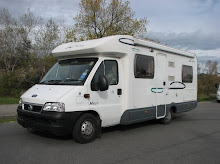








The Alhambra
Sunday started grey and cold but as the bus dropped us in the centre of town the clouds lifted as did the temperature and we had our first view of the Alhambra, the focus of our visit to Granada. Set on its hill above the rest of the city it is easily seen but less easily found on foot. Eventually we reached a gateway and entered the horse chestnut woods (planted by the Duke of Wellington) that surround the walls of the fortress. We went to get our tickets and were told that the visit of EU ministers might cause some disruption. They were attending an informal meeting on information technology – what is that all about – do they call each other by their Christian names?
The Alhambra, we discovered, is made up of four main areas, the old fort, the palaces, the old town and the gardens. Advice was to visit the fort (alcazaba) first and then head for the Generalife gardens. We had a set time to visit the palace at 5:30pm and after that we could try to see the old town although that might be closed off for reasons of security.
The fort is impressive, with its towers and walls that are all well preserved (restored) and which give great views over the city. We spent a good time there enjoying the sunshine and the views whilst soaking up the history of the Moors who came here in around 900 and fortified this hill in stages, ousted the Visigoths and created a city which was the last to fall during the re-conquest in 1492.
Once the area was secured the palaces could be built and the califs and sultans could arrive. The palace and gardens were created in the early 14th century on the adjacent hilltop (Generalife) to provide fruit and vegetables for the rest of the city. These are also well restored and give the best example we have seen while in Spain of Moorish building and design. During the fierce heat of the Summer this made for a cool place where the sultans could relax in the gardens with their fountains and running water to create a peaceful haven.
At the appointed hour we entered the Nasrid Palaces – three palaces built between 1325 and 1391. We are getting pretty good at recognising the design and build techniques of the Muslim architects and Islamic tradition and how these were adopted and adapted by the catholic kings when they took over. Here we saw some great design but cannot be sure that the Alcazar in Seville does not give a more cohesive example. The development of these three palaces is interesting to follow and the position high on the hill is quite unusual and truly stunning. As we moved from room to room and palace to palace with the views over the deep gorge to the north we could really feel what it might have been like to live here.
After almost six hours of wandering and exploring we felt we had an excellent appreciation of the whole and set off through the modern city to catch our bus - past the cathedral and the shopping streets.

No comments:
Post a Comment